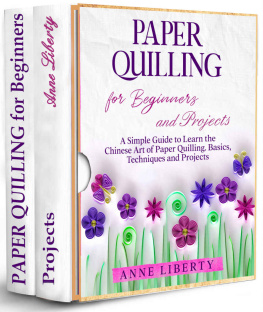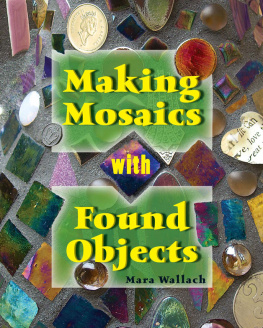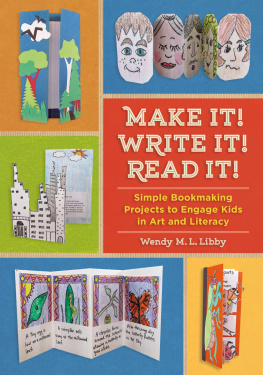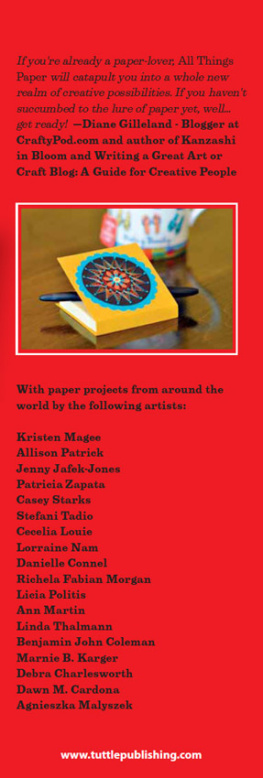MORE
MAKING BOOKS BY HAND
Exploring Miniature Books,
Alternative Structures, and Found Objects
Written and illustrated by
Peter and Donna Thomas


Paradise, 1999. 2" 2" (7 cm 5.1 cm). The text on the front of the flaps is intended to make the reader think of filing card dividers for thoughts about paradise. The text on the back of the flap is a quote by Dante. The panels are covered with handmade paper printed with images of a tropical paradise. The book is covered with handmade paper that has been printed with the word paradise in different colors and typefaces. 42 copies.
CONTENTS
INTRODUCTION
The word book, like the word art, defies simple definition. Just as there are many kinds of art, there are many kinds of books: textbooks, comic books, pop-up books, fine press books, altered books, conceptual books. The list is limited only by imagination and creativity.
Artists books are, by definition, works of art in the medium of the book. As it is with other kinds of art, books frequently beg questions of the viewerWhat is art? What is a book? Not all books are works of art; some are simply storage units made to house information. A blank book is an empty container, but when you fill it, it becomes an artists book that can share your ideas, feelings, imagery, and aesthetic with whoever views it.

Wildflowers of the John Muir Trail, 2003. 2 5/8" 2" (6.7 cm 5.7 cm).
Note: Unless otherwise noted, all featured books have been made by Peter and Donna Thomas. Hand-rendered illustrations and linoleum block prints by Donna Thomas. Paper handmade by Peter Thomas.
Our book will introduce you to many tips and special techniques that we have developed for making many different kinds of books. It describes the tools we use and how we use them, and it describes common materials and ways you can use them to make books. We encourage you to strive for excellence in craftsmanship: if your craftsmanship is not as good as your idea, your book will be less likely to succeed as a work of art.
One day when we were selling blank books at a crafts fair, an old bookbinder came by and told us, You cant buy experience. It was sound advice. The only way to become a book artist is to practice. Make a lot of books, hone your skills, and in time you will master the craft. This book will teach you how to build many book structures, but it will be up to you to fill those books with words and images, and to make them works of art.
BASIC BOOKMAKING TECHNIQUES
BOOKBINDING TERMINOLOGY
A single piece of paper is often called a page, sheet, or . The recto is typically the odd-numbered page.

A folio
The rough, feathered edge of handmade paper is called the . It is created when the deckle, which is also the name for the top half of the wooden frame that a papermaker uses to make paper, is removed. The pulp slumps and leaves a natural ragged edge. The fibers in paper tend to run in one direction, and this is called the grain. Paper folds more easily along the grain than across the grain. When commercial paper is cut and packaged, the label indicates grain direction, either by stating grain long (grain runs the length of the sheet) or grain short (the width) or by underscoring the dimension of the grain direction (for example, 8" " paper has grain running in the 11" direction and is grain long).
When a sheet of paper is folded in half it is called a .

Parts of a book
There are terms for describing the parts of a book. The top is the are used to refer to both the covers of the book and the bookblock. The dimensions of a book are conventionally described by first stating the height and then the width.

The case
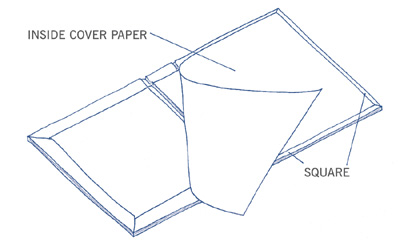
The square and inside cover paper
Most modern books are made by gluing a bookblock into a that is glued inside the case before the bookblock is cased-in.
Note: For additional reference, a complete alphabetical glossary can also be found on .
TOOLS
Traditional bookbinding required the use of many specialized tools, but it is not necessary to have those tools to make books; almost everything you need can be bought in art supply or hardware stores. We recommend the following tools for the beginning book artist: acrylic paintbrush, awl, binder clips, bone folder, butter knife, clamps, cutting mat, metal ruler, needle, pencil, sandpaper, scissors, thread, triangle, utility knife, and waxed paper.
Acrylic paintbrush. We use inexpensive brushes made for acrylic painting, and prefer stiff rather than soft synthetic bristle brushes. We use " to " (1.3 cm to 1.9 cm) flat or bright brushes for small work. We use both flat and round 1" to 2" (2.5 cm to 5.1 cm) brushes for large work.
Awl. We use two awlsone with a short needle for marking and measuring, the other with a thicker needle for stabbing holes through cardboard or paper. You can make an awl by drilling a hole in a dowel, filling the hole with epoxy, and pushing a needle into the hole. An awl for bookbinding should have a straight shaft rather than a shaft that tapers. You can also use an electric drill to make holes in wood or very thick stacks of paper.
Binder clips (also sometimes called bull clips). We use these springing metal clips to hold paper during various bookbinding procedures. We keep several sizes" to 2" (1.3 cm to 5.1 cm)on hand at all times.
. We use a medium-sized folder with a point at one end and a curve on the other. Bone folders are usually made from cow bone and are available at art supply stores and from bookbinding suppliers. Some people use Teflon folders because they do not leave burnish marks on paper.
Butter knife. We use a serrated butter knife to slit paper to get a rough edge that resembles handmade papers deckle edge. The larger the serrations on the knife, the rougher the cut.
Clamps. We use clamps to hold work firmly in place. Bar clamps are available from hardware stores. Although they are more expensive, we find the best bar clamps are singlehanded opening and closing, because these can be operated with one hand while holding the work with the other. We have four mini bar clamps and four 18" (45.7 cm) bar clamps.
Cutting mat. We use a self-healing cutting mat as a working surface when cutting and scoring paper. These mats are available at art supply and fabric stores. We have found that the thicker mats and the ones made with more flexible materials hold up better.


